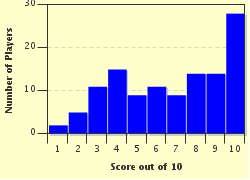Quiz Answer Key and Fun Facts
1. "H" marks a spot that you won't find on modern maps. After flowing out of the Garden of Eden, through what land - known for its gold and other treasures - did the river branch called the Pishon wind?
2. "H" marks Hattusa, a spot occupied by a people whose name was long known only from references to them in the Bible. Abraham buys a burial place from a person of this ethnicity, and King David falls in love with the wife of another such person. The archaeological site of Hattusa in Turkey is now on the UNESCO World Heritage List. What empire had its capital there?
3. "H" marks a spot where Abraham and his extended family settled after leaving Ur, in modern day Iraq, and before God gave him instructions to travel southwest along the fertile crescent to what is now Israel. What is the name of this location, where later in the story wives were sought for Abraham's son Isaac and grandson Jacob?
4. "H" marks the spot where Abraham purchased a family burial site called the Cave of Machpelah, near the Oaks of Mamre. At what city in Israel would we find this ancient Tomb of the Patriarchs?
5. "H" marks several Biblical spots. What do the locations Horeb, Hor, Hazor, and Hermon have in common?
6. "H" marks the spot in Egypt called "On" in some Bible passages. What is another name for this ancient "sun city"?
7. "H" marks a spot (or spots) connected with an ethnic group especially important in the Christian New Testament. What "H" names the scattered lands and islands collectively synonymous with Greece or territories where Greek culture predominates?
8. "H" marks the spot in northern Israel of the modern city of Haifa, built surrounding a mountain crest on the shores of the Mediterranean Sea. It is around 17 miles (28 km) from Nazareth, the village where Jesus grew up, and is located where many events in the life of the prophet Elijah took place, including a famous contest with the priests of Baal in which Elijah called fire down from heaven (1 Kings 18). On what mountain is Haifa, where visitors can see a place called Elijah's Cave?
9. What "H" word marks the spot of a cone-shaped, fortified hill where the infamous King Herod the Great, the slaughterer of innocents in the New Testament Gospel of Matthew, is thought to have been buried?
10. "H" marks a spot in Revelation 16:16 with a name that comes from two Hebrew words: the generic word for a mountain or hill and the specific name of an ancient city near Mount Carmel and the Jezreel Valley. What are these two words that make up the name of a great battle between the forces of the "Lamb" and the forces of evil?
Source: Author
nannywoo
This quiz was reviewed by FunTrivia editor
CellarDoor before going online.
Any errors found in FunTrivia content are routinely corrected through our feedback system.


